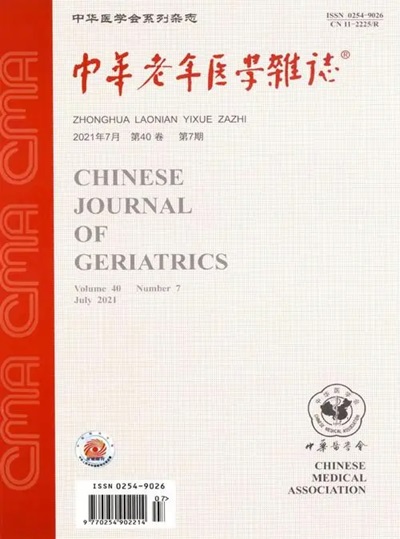Berberine alleviates cerebral ischemia-reperfusion injury in type 2 diabetic rats by inhibiting endoplasmic reticulum stress-related inflammatory pathways
引用次数: 0
Abstract
Objective To examine the effects of Berberine(BBR)on inflammatory pathways related to endoplasmic reticulum stress(ERS)in the penumbra area following focal cerebral ischemia-reperfusion injury in type 2 diabetic rats. Methods A total of 72 healthy male Sprague-Dawley rats were fed a high-fat, high-sugar diet and injected with streptozotocin to establish a type 2 diabetes mellitus model.The diabetic rats were randomly divided by digital lottery method into a Sham operation group(Sham group), a diabetic rat + BBR treatment group(BBR group), a diabetic middle cerebral artery occlusion(MCAO)model group(MCAO group), and a diabetic rats MCAO + BBR treatment group(MCAO + BBR group). Six rats were included in each group.The two treatment groups received prespecified doses of BBR through gastric perfusion at 48 h, 24 h before surgery, and 6h after surgery.The MCAO model was prepared by a suture occlusion method.The neurological deficit scores were performed, and the expression of tumor necrosis factor-α(TNF-α)and interleukin-1β(IL-1β)was detected by enzyme-linked immunosorbent assay(ELISA). The mRNA expression of ERS marker protein GRP78 was detected by quantitative real time polymerase chain reaction(RT-qPCR), and the expression of ERS-related inflammatory pathway proteins[78 Glucoseregulated protein(GRP78)、Pancreatic endoplasmic reticulum Rinase(PERK)、nuclear factor-κB(NF-κB)]was detected by Western blot. Results the cerebral ischemic penumbra area, after 2 h of ischemia and 24 h of reperfusion, the neurological deficit score in the MCAO group was higher than that in the MACO+ BBR group [(2.83±0.41)vs.(1.67±0.52), P<0.05], and the expression levels of pro-inflammatory cytokines(TNF-α and IL-1β)and ERS-related inflammatory pathway proteins(GRP78, PERK and NF-κB p65)were also significantly increased(all P<0.05). However, BBR treatment was able to alleviate the neurological dysfunction caused by cerebral ischemia-reperfusion in type 2 diabetic rats(P<0.05). Similarly, BBR treatment also reduced the expression levels of pro-inflammatory factors(TNF-α and IL-1β)and ERS-related inflammatory pathway proteins(GRP78, PERK and NF-κB p65)in the cerebral ischemic penumbra area(all P<0.05). Conclusions Through inhibiting ERS-related inflammatory pathways, BBR plays a neuroprotective role to alleviate cerebral ischemia-reperfusion injury in type 2 diabetic rats. Key words: Berberine; Inflammation; Diabetes, type 2; Brain ischemia小檗碱通过抑制内质网应激相关炎症通路减轻2型糖尿病大鼠脑缺血再灌注损伤
目的探讨小檗碱(BBR)对2型糖尿病大鼠局灶性脑缺血再灌注损伤后半暗区内质网应激(ERS)相关炎症通路的影响。方法选用健康雄性Sprague-Dawley大鼠72只,饲喂高脂、高糖饲料,注射链脲佐菌素,建立2型糖尿病模型。采用数字摇号法将糖尿病大鼠随机分为假手术组(Sham组)、糖尿病大鼠+ BBR治疗组(BBR组)、糖尿病大脑中动脉闭塞(MCAO)模型组(MCAO组)和糖尿病大鼠MCAO + BBR治疗组(MCAO + BBR组)。每组6只大鼠。两个治疗组分别于术前48 h、24 h和术后6h通过胃灌注给予预先规定剂量的BBR。采用缝合闭塞法制备MCAO模型。进行神经功能缺损评分,采用酶联免疫吸附试验(ELISA)检测肿瘤坏死因子-α(TNF-α)和白细胞介素-1β(IL-1β)表达。采用实时定量聚合酶链反应(RT-qPCR)检测ERS标记蛋白GRP78 mRNA表达,Western blot检测ERS相关炎症通路蛋白[78糖调蛋白(GRP78)、胰内质网洗净酶(PERK)、核因子-κB(NF-κB)]表达。结果缺血半暗区,缺血2 h、再灌注24 h后,MCAO组神经功能缺损评分高于MACO+ BBR组[(2.83±0.41)比(1.67±0.52),P<0.05],促炎因子(TNF-α、IL-1β)和ers相关炎症通路蛋白(GRP78、PERK、NF-κB p65)表达水平显著升高(均P<0.05)。然而,BBR治疗可减轻2型糖尿病大鼠脑缺血再灌注引起的神经功能障碍(P<0.05)。同样,BBR治疗还降低了脑缺血半暗区促炎因子(TNF-α、IL-1β)和ers相关炎症通路蛋白(GRP78、PERK、NF-κB p65)的表达水平(均P<0.05)。结论BBR通过抑制ers相关炎症通路,发挥神经保护作用,减轻2型糖尿病大鼠脑缺血再灌注损伤。关键词:小檗碱;炎症;2型糖尿病;脑缺血
本文章由计算机程序翻译,如有差异,请以英文原文为准。
求助全文
约1分钟内获得全文
求助全文

 求助内容:
求助内容: 应助结果提醒方式:
应助结果提醒方式:


